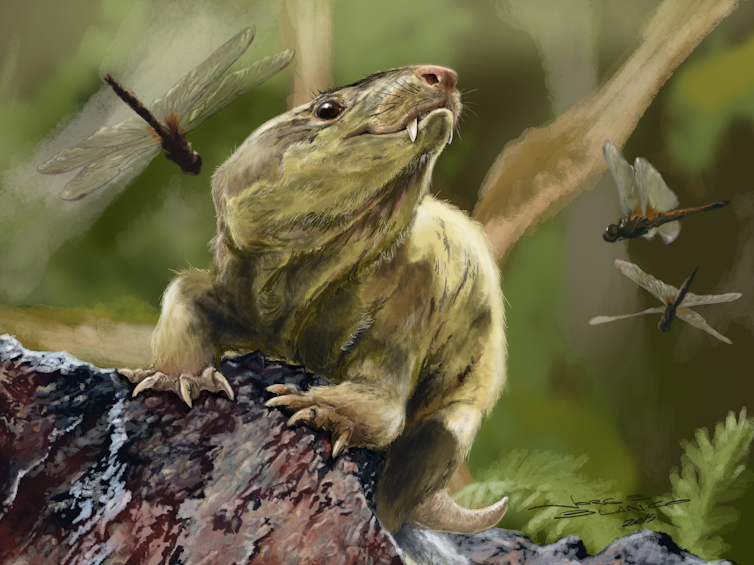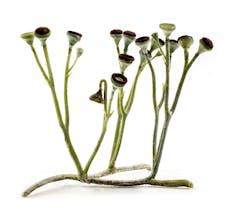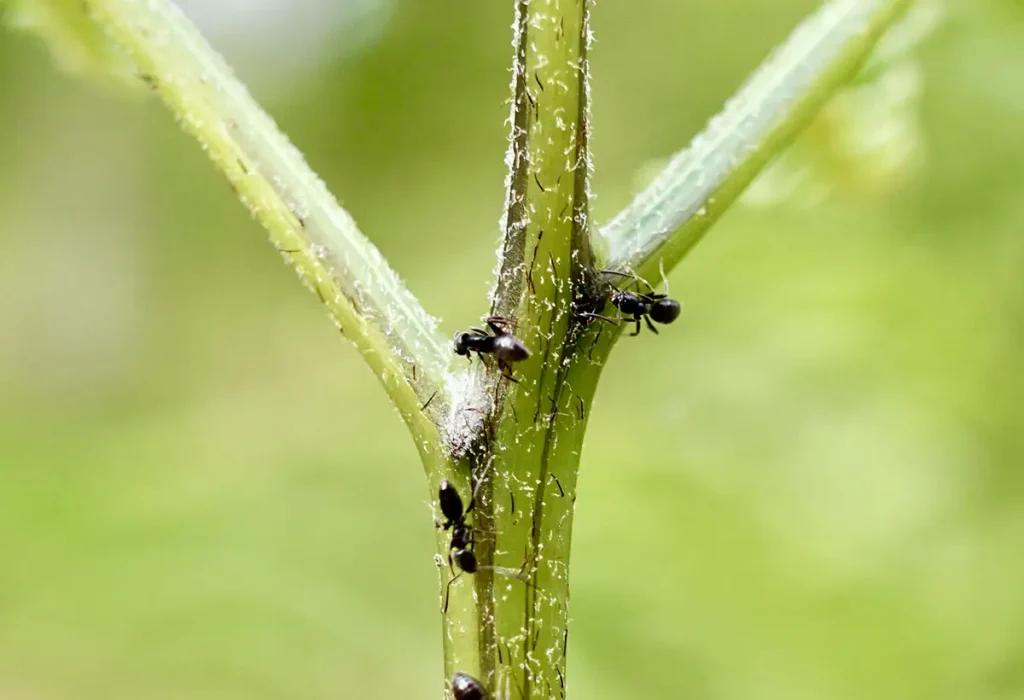

Liz Derryberry Honored as Athletics Professor of Excellence
The Athletics Professor of Excellence awards started in the 2024-2025 academic year as a result of the advocacy of the Faculty Senate, in partnership with the University of Tennessee Athletics Department. The awards, which are funded by Athletics and come with a $15,000 honorarium, recognize professional excellence and outstanding university citizenship at the departmental, college, or university levels.

Jacob Suissa Receives Grady L. Webster and Barbara D. Webster Structural Botany Publication Award
The Grady L. Webster and Barbara D. Webster Award is a rotating award presented in alternating years by the American Society of Plant Taxonomists and the Botanical Society of America.
Armsworth Receives SEC Faculty Achievement Award
Paul Armsworth, Distinguished Service Professor in the Department of Ecology and Evolutionary Biology at the University of Tennessee, Knoxville, has received a 2025 Southeastern Conference Faculty Achievement Award for excellence in teaching, research and service.
Ferns’ ability to evolve ‘backward’ offers insights into the meandering path of evolution
Ferns’ ability to evolve ‘backward’ offers insights into the meandering path of evolution

Imagine a photograph of your great-grandparents, grandparents and parents side by side. You’d see a resemblance, but each generation would look distinct from its predecessors. This is the process of evolution in its simplest form: descent with modification.
Over many generations, a staggering amount of modification is possible. This is how the diversity of life on Earth came to be.
This idea, though, has long been misunderstood as a path that leads in one direction toward “higher” or “better” organisms. For example, Rudolph Zallinger’s famous 1965 Time-Life illustration “The Road to Homo Sapiens” shows humans evolving in a stepwise fashion from ape-like ancestors to modern man.
Extending this perspective beyond humans, early paleontological theories about ancient life supported the idea of orthogenesis, or “progressive evolution,” in which each generation of a lineage advanced toward more sophisticated or optimized forms.
But evolution has no finish line. There is no end goal, no final state. Organisms evolve by natural selection acting at a specific geologic moment, or simply by drift without strong selection in any direction.
In a recently published study that I carried out with Makaleh Smith, then an undergraduate research intern at Harvard University who was funded by the National Science Foundation, we sought to study whether a one-way model of reproductive evolution always held true in plants. To the contrary, we found that in many types of ferns – one of the oldest groups of plants on Earth – evolution of reproductive strategies has been a two-way street, with plants at times evolving “backward” to less specialized forms.
The path of evolution is not linear
Selection pressures can change in a heartbeat and steer evolution in unexpected directions.
Take dinosaurs and mammals, for instance. For over 150 million years, dinosaurs exerted a strong selection pressure on Jurassic mammals, which had to remain small and live underground to avoid being hunted to extinction.
Then, about 66 million years ago, the Chicxulub asteroid wiped out most nonavian dinosaurs. Suddenly, small mammals were relieved of their strong predatory selection pressure and could live above ground, eventually evolving into larger forms, including humans.

In 1893, Belgian paleontologist Louis Dollo introduced the idea that once an organism progresses to a certain point, it does not revert to a previous state in the exact way in which it evolved – even if it encounters conditions identical to those it once experienced. Dollo’s law, as it came to be known, implies that specialization is largely a one-way street, with organisms accumulating layers of complexity that make backward evolution impossible.
While Dollo’s law has been criticized, and its original idea has largely faded from popular discourse, this perspective still influences aspects of biology today.
Plants and the march of progress
Museums often depict animal evolution as a straight-line progression toward higher stages, but they’re not the only sources of this narrative. It also appears in teaching about the evolution of reproduction in plants.

The earliest vascular plants – those with tissues that can move water and minerals throughout the plant – had leafless, stemlike structures called telomes, with capsules at their tips called sporangia that produced spores. The telomes did both of the plants’ big jobs: converting sunlight to energy through photosynthesis and releasing spores to produce new plants.
Fossil records show that over time, plants developed more specialized structures that divided these reproductive and photosynthetic functions. Moving through plant lineages, from spore-bearing lycophytes to ferns to flowering plants, reproduction becomes more and more specialized. Indeed, the flower is often diagrammed as the end goal of botanical evolution.

Across the plant kingdom, once species evolved reproductive structures such as seeds, cones and flowers, they did not revert to simpler, undifferentiated forms. This pattern supports a progressive increase in reproductive complexity. But ferns are an important exception.
Evolving, but not always forward
Ferns have multiple reproductive strategies. Most species combine spore development and photosynthesis on a single leaf type – a strategy called monomorphism. Others separate these functions to have one leaf type for photosynthesis and another for reproduction – a strategy called dimorphism.
If the patterns of specialization seen broadly across plants were universal, we would expect that once a lineage of ferns evolved dimorphism, it could not shift course and revert to monomorphism. However, using natural history collections and algorithms for estimating evolution in ferns, Smith and I found exceptions to this pattern.
Within a family known as chain ferns (Blechnaceae), we found multiple cases in which plants had evolved highly specialized dimorphism, but then reverted to the more general form of monomorphism.
Lacking seeds gives ferns flexibility
Why might ferns have such flexible reproductive strategies? The answer lies in what they lack: seeds, flowers and fruits. This distinguishes them from the more than 350,000 species of seed plants living on Earth today.
Imagine taking a fertile fern leaf, shrinking it down and wrapping it up tightly into a tiny pellet. That’s basically what an unfertilized seed is – a highly modified dimorphic fern leaf, in a capsule.
Seeds are just one highly specialized structure in a suite of reproductive traits, each building on the last, creating a form so specific that reversal becomes nearly impossible. But because living ferns don’t have seeds, they can modify where on their leaves they place their spore-producing structures.
Our findings suggest that not all reproductive specialization in plants is irreversible. Instead, it may depend on how many layers of specialization plants have acquired over time.
In today’s rapidly changing world, knowing which organisms or traits are “locked in” could be important for predicting how species respond to new environmental challenges and human-imposed habitat changes.
Organisms that have evolved down “one-way” paths may lack the flexibility to respond to new selection pressures in particular ways and have to figure out new strategies to change. In lineages such as ferns, species may retain their ability to “evolve backward,” even after specialization.
Ultimately, our study underscores a fundamental lesson in evolutionary biology: There is no “correct” direction in evolution, no march toward an end goal. Evolutionary pathways are more like tangled webs, with some branches diverging, others converging, and some even looping back on themselves.
Jacob S. Suissa, Assistant Professor of Plant Evolutionary Biology, University of Tennessee
This article is republished from The Conversation under a Creative Commons license. Read the original article.
Ecological Society of America Awards UT Researchers
Ecological Society of America Awards UT Researchers


by Randall Brown
Two Vol researchers from the UT Department of Ecology and Evolutionary Biology (EEB) earned honors in the 2024 Ecological Society of America (ESA) Awards. These awards recognize outstanding contributions to ecology in new discoveries, teaching, sustainability, diversity, and lifelong commitment to the profession.
EEB Professor Michael Blum, associate dean for research and creative activity in the College of Arts and Sciences, shared in the ESA’s George Mercer Award, given annually for an outstanding ecological research paper published within the past two years with an early-career lead author.
EEB PhD student Alivia Nytko earned the E. Lucy Braun Award for Excellence in Ecology for her poster presentation at the 2023 ESA Annual Meeting titled, “Plant rarity related to phylogenetic divergence in biomass: Implications for ecosystem function.”
“We are so pleased that our EEB researchers have been recognized by ESA for their scientific achievements,” said College of Arts and Sciences Interim Executive Dean Robert Hinde.
Blum collaborated with lead author Megan Vahsen, a postdoctoral fellow at Utah State University, Associate Professor Scott Emrich from UT’s Tickle College of Engineering, and others on the study “Rapid plant trait evolution can alter coastal wetland resilience to sea level rise,” published in Science in January 2023. Their work calls attention to the significant role of rapid evolution in shaping how ecosystems respond to global change.
They examined a dominant coastal marsh sedge to reveal how genetically based variation in a plant’s traits can evolve rapidly and influence a marsh’s resilience to sea level rise. The team used a unique approach, growing “resurrected” plants from decades-old seeds recovered from marsh soils and employing an ecosystem modeling approach. Bridging quantitative genetics and ecosystem modeling, their study highlights the need to consider evolutionary processes in ecological forecasting.
Nytko’s winning research challenges conventional views on plant rarity by suggesting that rarity might often be an evolutionary adaptation rather than a result of environmental constraints. She used data from 25 Eucalyptus species to examine how natural selection influences plant traits that in turn shape plants’ range sizes and habitat needs. Her findings reveal that rare species are consistently smaller than their more common counterparts and that this trait has evolved multiple times across different groups. Her work highlights potential pathways for promoting conservation of rare plant populations.
“This excellence in ecology award from ESA for Alivia is fitting and well-deserved,” said Professor and EEB Department Head Jennifer Schweitzer. “Alivia is such a creative graduate student and this rarity work with Professor Bailey is innovative and has the potential to change how we think about, predict and manage rare species in nature.”
Nytko’s award is named for E. Lucy Braun, an eminent plant ecologist and one of the charter members of the ESA, studied and mapped North American forests and described them in her book, The Deciduous Forests of Eastern North America.
“It is such an achievement that two researchers in the EEB department have been honored for their work in ecology on the national stage,” said Professor Kate Jones, divisional dean for math and natural sciences. “Alivia Nytko winning the Braun Award for Excellence in Ecology and being singled out for her poster presentation at the Ecological Society of America’s annual meeting is a huge honor. It is also fantastic to see my colleague Mike Blum’s work with Megan Vahsen being recognized in this way.”
ESA will present the 2024 awards during a ceremony at the society’s upcoming annual meeting, August 4–9 in Long Beach, California.
Suissa Study Has High Hopes For Plant-Ant Partnerships

by Randall Brown
Collaborations across research disciplines can lead to unexpected breakthroughs and discoveries. Collaborations across species lead to unexpected evolutionary paths of mutual benefit.
For example, some plants have managed to recruit ant bodyguards. They produce sugary nectar on their leaves that attracts the ants, then these very territorial and aggressive ant mercenaries patrol “their” plant and sting or bite herbivores that try to eat it.
These relationships are well-documented in flowering plants, but they also occur in non-flowering ferns. This is weird news for researchers, as it has long been thought that ferns lack the nectaries for such complex biotic interactions.
Jacob Suissa, assistant professor in the UT Department of Ecology and Evolutionary Biology, worked with colleagues at Cornell University, including fern expert Fay-Wei li and ant expert Corrie Moreau, to investigate how this phenomenon developed over the millennia. They recently published findings in Nature Communications about the evolutionary timeline and underlying factors of this interspecies partnership.
“The new elements of this work are twofold,” explained Suissa. “First, we discovered that nectaries—the structures that produce sugary nectar to attract ant bodyguards—evolved in ferns and flowering plants around the same time.”
This happened some 135 million years ago, coinciding with the rise of plant-ant associations in the Cretaceous period.
“This timing is quite spectacular given that it is very late in fern evolutionary history, nearly 200 million years after their origin,” said Suissa. “But it’s very early in flowering plant evolutionary history, nearly at the start of their origin in the Cretaceous.”
The second new element is how it all happened. Ferns originally flourished as terrestrial plants, growing on the forest floor. They transitioned in a major way in the Cenozoic Era, around 60 million years ago, becoming epiphytic, or tree dwelling, plants.
They learned some new habits on their way up.
“We discovered that as ferns left the forest floor and moved into the canopies, either as epiphytes, climbers, or tree ferns, they tapped into the existing ant-flowering plant interactions and evolved nectaries,” said Suissa.
This presents a curious dynamic in the ecological and evolutionary history of these two plant lineages. Ferns and flowering plants diverged from a common ancestor more than 400 million years ago, but then hit their stride in parallel with their nectary evolution and the mutually beneficial ant-plant tradeoff.
“This suggests that there may be some ‘rules of life’ governing the evolution of non-floral nectaries and ant-plant mutualism,” said Suissa. “This work can help future investigations by providing the evolutionary framework or backdrop for ecological, developmental, or genomic analyses.”
Read Suissa’s full paper, “Convergent evolution of nectaries in ferns facilitated the independent recruitment of ant-bodyguard from flowering plants,” in Nature Communications.
- 1
- 2
- 3
- …
- 6
- Next Page »